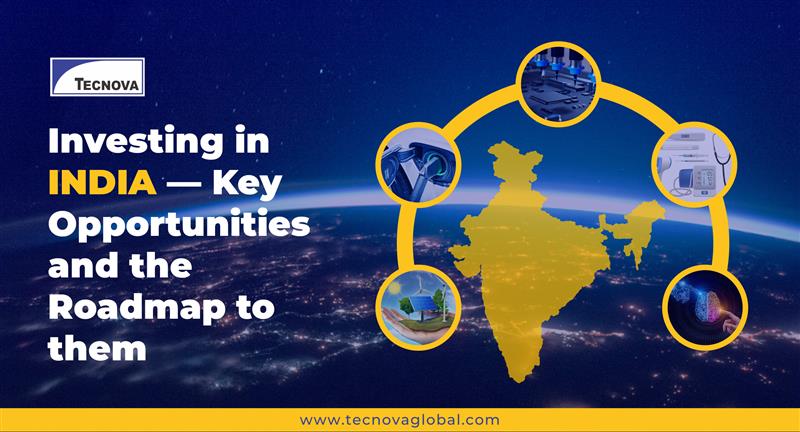Owing to a growing rate of population, rapid urbanisation, growing infrastructure and manufacturing sector, power generation is witnessing rapid growth over the years. In fact, electricity production is seen to expand at a CAGR of 6.3 per cent over financial years 2010-15 in the country.
For meeting the rising demand for electricity in India, it is expected that power companies would be making massive additions to the already installed capacities, together with commissioning new projects. This would further receive thrust with the Government focusing on attaining ‘Power For All’ in the country.
Some of the recent initiatives undertaken by the Government to encourage private-participation in the sector are as follows:
US-India collaboration
India has been inviting companies from the US for investing in the energy sector for greater collaboration between India-US. With this synergy, higher potential can be created with vast resources that India has to offer, including technology and capability.
At the India-US Ministerial Energy Dialogue, Minister of State for Power, Piyush Goyal stressed on developing energy data management system for better simulation for the energy sector in the country and asked for collaborative support from the US.
It is also been recognised that in India there are reserves of shale gas, and the US would be able to provide their expertise in terms of extracting the oil, as they already have exposure in this area for a considerable period of time. Collaboration is being sought in the area of fracking of shale gas, focused towards water less fracking.
Coal plants being the main source for producing electricity in the country, India has sought from the US for sharing technology related information, together with disclosing some useful data on best practices for improving the processes in the country.
Government initiatives
The present Government in the center – National Democratic Alliance or NDA – has been able to strengthen the power sector with states such as Uttarakhand, Goa as well as Meghalaya. These states are now taking the lead with collaborating with the centre. With increasing rates as well as restructuring their debts, these states are also looking at enabling power supply on 24×7 basis for the consumers under the ‘Power For All’ initiative of the Central Government. This would cost them around INR 7,563 crore or USD 1.16 billion.
The centre is looking at pursuing these states and tackling issues by increasing rates as well as raising funds.
As per the joint statement released by the Government which is a five-point agenda for the above mentioned states, the Government is looking at the following:
• Generating power as well as increasing capacity at local energy plants. This includes hydro-electricity in the states like Meghalaya and Uttarakhand.
• Improving the network in terms of inter-state transmission, reviving sick distribution sector and enhancing usage of renewable energy. With that, using of measures for energy-efficiency will also be implemented.
• Initiatives also include strong communication, monitoring division as well as information technology. The Government would be able to provide financial assistance too.
Narendra Modi – the Prime Minister of India – launched ‘Deen Dayal Upadhyaya Gram Jyoti Yojana’ which is basically for power sector reforms for the rural areas. The aim is to provide uninterrupted supply of electricity in major parts of the country. The power scheme is now focusing on feeder separation which includes agricultural usage and rural households. This also includes growing the sub-transmission as well as distribution infrastructure such as metering in the rural areas.
The earlier scheme for rural electrification which is Rajiv Gandhi Grameen Vidyutikaran Yojana has been submerged into the above new scheme for rural electrification. With this, the total outlay for these schemes has been around INR 76,000 crore or USD 11.8 billion. Out of this, the Central Government would be providing a grant of INR 63,000 crore or USD 9.8 billion.
Further, a total of INR 14,680 crore [i] or USD 2.2 billion projects have been approved, of which INR 5,827 crore or USD 0.92 billion has been sanctioned for Bihar.
Investments
General Electric Co. – GE – has been looking at increasing their investments in the railway, healthcare as well as power sector. GE has agreed to get actively involved in the ‘Make in India’ initiative as launched by the Government. The company has increased the levels of local sourcing by more than 20 per cent for the locomotives sector. It has increased the sourcing in the equipment sector by 30 per cent as well as in aviation by 15 per cent.
An investment of INR 25,200 crore or USD 3.8 billion has been planned by Adani Group for projects in Chhattisgarh. The company would be investing the money in two projects, which also includes coal-to-poly generation in the state.
Ind Barath Power Infra Ltd (IBPIL), which is a Hyderabad-based producer of power, and Macquarie Infrastructure & Real Assets (MIRA) invested INR 780 crore in the unit of Ind Barath Energy Utkal Ltd.
In conclusion
The Indian power sector has an investment potential of INR 15 trillion [ii] or USD 237 billion in coming four to five years, thus providing huge opportunities in segments such as power generation, transmission, distribution as well as equipment.
Immediate goal of the Government is looking at generating two trillion units of energy by the year 2019, which means doubling production capacity for providing 24×7 electricity for industrial, residential, commercial as well as agricultural usage.
To know more, connect with our consultants at enquiries@tecnovaglobal.com





.png)





















.png)

.png)








.jpg)




.jpg)



































































